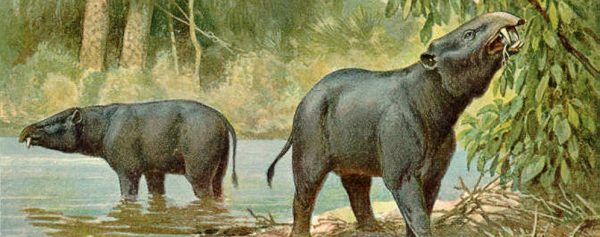There’s no place like home – for early humans
Joshua Zaffos
A person exploring the Serengeti in Tanzania can be forgiven for feeling as if they have traveled four million years back in time. Grasslands and umbrella thorn acacia trees stretch to the horizons across a natural area larger than Maryland. Elephants, giraffes, zebras, lions and scores more wild animals range across the landscape. Few signs of human impact exist. Catching a glimpse of a small clan of early, ape-like humans doesn’t feel far-fetched.
Even paleoanthropologists, who study the origins of humans, widely use the present-day savanna as a stand-in for the past to understand how environmental conditions triggered evolutionary changes millions of years ago. But that practice might be leading researchers astray, according to Andrew Du, paleoanthropologist and Colorado State University assistant professor of anthropology. In research published last fall in the Proceedings of the National Academy of Sciences, Du and colleagues concluded that ancient natural communities where humans evolved are like none that exist today. That is, there is no precise analog between present-day Serengeti and prehistoric African grasslands.
“We show that environments back then were fundamentally and functionally different than they are today,” Du said.

Paleoanthropologists agree that early human species, or hominins, evolved and split from the ancestors of chimpanzees and bonobos in Africa between 4-7 million years ago. Over several million years, different hominins, including Lucy and Australopithecus, then Neandertals, and eventually Homo sapiens, developed larger brains and began standing and walking upright, among other adaptations.
Genetic population changes and evolution at large happen due to environmental changes – selective pressures, in the parlance of evolutionary biology. If a community of people migrated toward a hotter, tropical place – or climate change warmed temperatures – the increased sunlight would be a selective pressure that, over time, would favor the health and survival of people with darker skin better adapted to harsh ultraviolet sunrays.
Lacking a time machine, researchers rely on modern environments to reconstruct past ones and detect selective pressures. The African savanna is the prime example. Scientists know the region’s vegetation and wildlife have changed over millions of years, but the present-day, expansive and wild Serengeti remains a commonly referenced and influential analog for past eastern African ecosystems.
“In paleoanthropology, we’ve been so focused on reconstructing environments that no one took a step back and looked at whether these analogs worked,” Du said.
Du and his colleagues, Tyler Faith, archaeology curator at the Natural History Museum of Utah and assistant professor of anthropology at the University of Utah, and John Rowan, a postdoctoral fellow the University of Massachusetts, Amherst, decided to do just that. They used published studies to compile 7 million years’ worth of fossils from African wildlife and then compared them with records from 200 modern African wildlife communities.

Du’s group found that the environments that fostered hominin evolution were “markedly different” from contemporary ecosystems. For instance, there are five modern species of “megaherbivores” – plant-eating animals, such as elephants, rhinos, and hippos, weighing more than 2,000 pounds. But there were 28 more such species that became extinct in the preceding millions of years. More megaherbivores mean a different diversity of trees and grasses, which would alter food sources, fire regimes, and shelter from predators for hominins and other animals.
Ultimately, the much richer mix of large animal populations and the very different environments they inhabited and impacted are basically unrelated to any natural landscape we can observe today. The coauthors assert that conditions and traits of natural communities in eastern Africa didn’t become analogous to modern ecosystems until about 700,000 years ago; a relatively recent snapshot from the overall evolutionary record.
Reviewing the study in the journal Current Biology, Princeton University ecologist Robert Pringle wrote that these “functional differences…documented by Faith and colleagues highlight a crucial question: how far can we go in extrapolating from the present to the past?”
Du asserts that the finding doesn’t challenge the big-picture story of evolution, nor does it reject the use of analogs in evolutionary research. “It’s about nuance,” he said. “It’s such a novel finding – no one has asked the question before – so it’s going to take time for the field of paleoanthropology to digest.”
“We can’t look at Serengeti today as an analog to some ancient version of eastern Africa where hominins evolved,” said Du. “If we keep viewing these paleo-environments through the lens of the present, we will miss things that are important for our understanding of human evolution.”